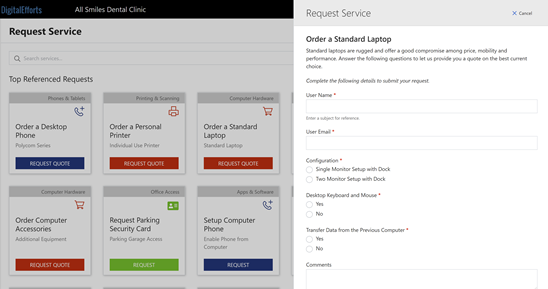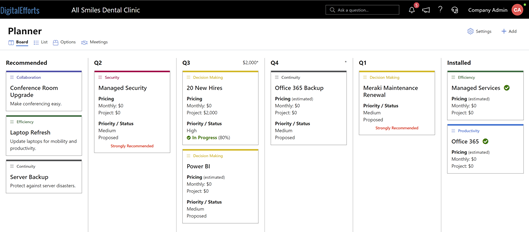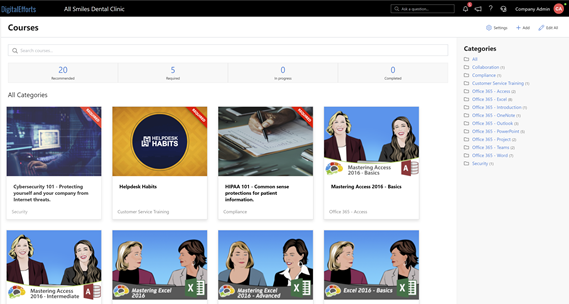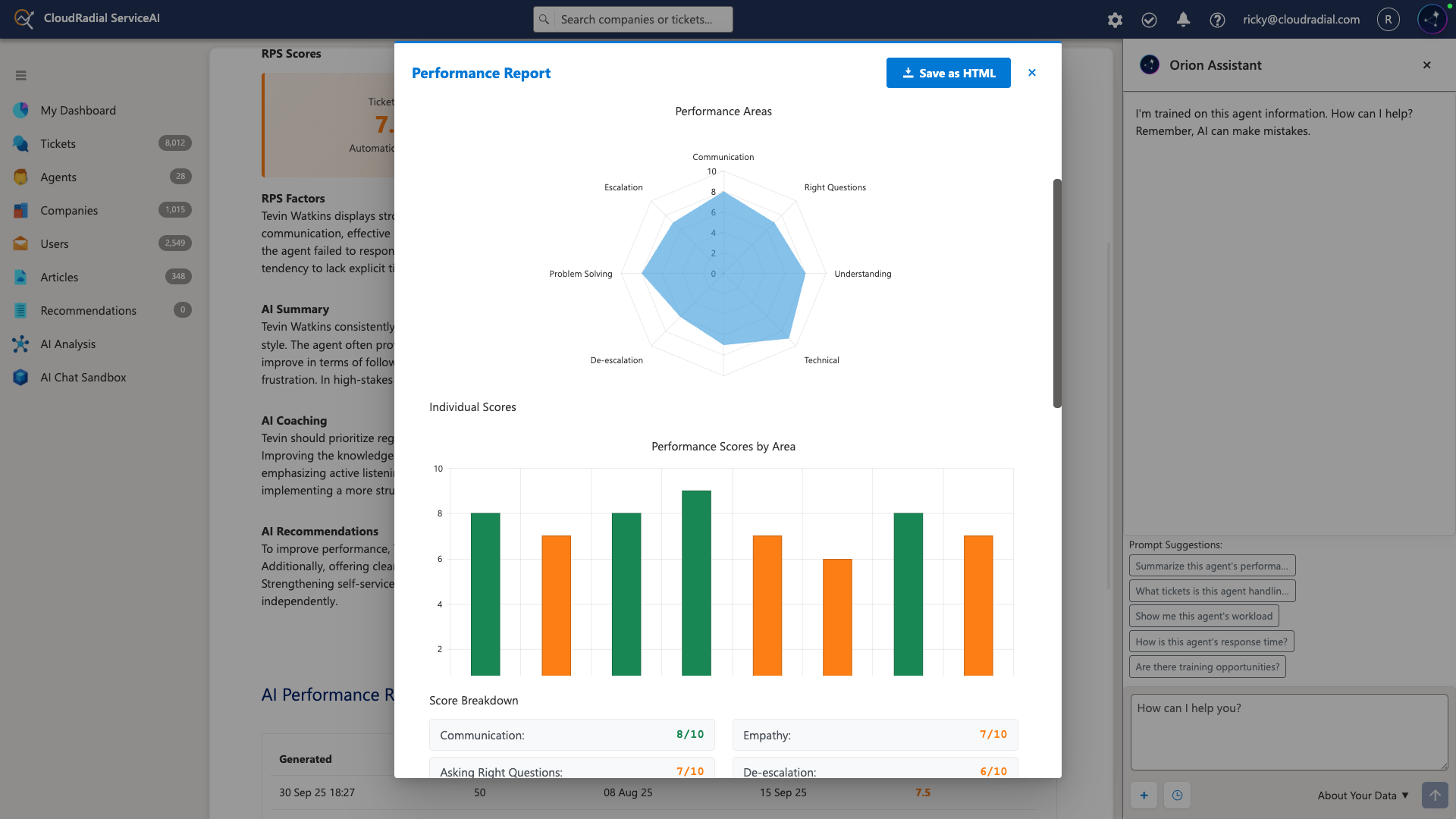CloudRadial 2025: The Year MSPs Stopped Experimenting with AI and Started Transforming
As we close out 2025, it's clear that this was CloudRadial's most transformative year yet. We didn't just release new features—we fundamentally...
Get everything you need for the ultimate client experience
Enterprise-grade infrastructure with the flexibility MSPs demand
Perfectly tailored AI that knows your specific MSP

Build your own Shopify-like store with your PSA products & distributors
Have clients to submit tickets directly to your PSA, freeing up your team's time
Pre-triage and route tickets correctly with the help of AI
Deliver instant, accurate answers that can help achieve zero-touch resolution
You'll learn things like how to add revenue without adding cost, MSP best practices, and how to master client management.

Co-managed IT environments are becoming increasingly common in every market in the world.
Sharing the IT management load across multiple resources isn’t just easier – it’s more beneficial for all parties involved. The premise of a co-managed IT structure offers tempting benefits that managed service providers (MSPs) and customer businesses of all sizes simply can’t pass up.
Some of these benefits include:
Interestingly, the concept of co-managed hasn’t just extended to the MSP and the incumbent technical teams. More often, co-managed has started to encompass the users within the organization themselves, holding them accountable for doing their part when it comes to IT responsibilities.
More on all of this in a bit – first, one burning question remains to be answered.
Co-managed IT takes many shapes and forms, but the core idea is the same in each case.
MSPs are typically the ones to shoulder the burden of finding a way to facilitate and prove the collaboration is happening between the parties.
To do that, many MSPs are flocking to CloudRadial.
CloudRadial was built from the ground up as a client portal. Its direct intention was always to make service delivery and strategic IT endeavors transparent for MSP clients with 24/7, on-demand access.
And while it works perfectly for traditional singular MSP-client business partnerships, it also provides MSPs with everything they need to deliver a collaborative space for co-managed IT relationships.
Based on the feature set that CloudRadial offers, there are three primary methods that an MSP could take with the co-managed approach:
What CloudRadial does:
CloudRadial boasts a robust ticketing suite that allows for many features that MSPs and clients alike look for – customizable forms, built-in approval processes, routing option granularity and more.
When utilizing a PSA tool, an MSP can leverage CloudRadial to give customers the power to see their entire ticket history. Even without a PSA in use, CloudRadial can still be used as a co-managed platform for a company to send tickets to any destination to and from an email.
CloudRadial even separates the area to submit problem report tickets from the area to submit service requests (or change management orders).

How it applies to a co-managed strategy:
CloudRadial enables the MSP and the client to share a centralized location for users to submit tickets that can go to internal IT staff, the MSP team, 3rd-party vendors and more.
The MSP can deliver a valuable font of intellectual property in terms of onboard/offboard forms, triage ticket forms, order catalogs and more. In addition, the client and co-managed team alike can add on to the portal to collaborate and create a fully customized ticketing platform that enables the best possible workflow processes for all parties involved.
In cases where the MSP is used as an outsourced helpdesk, CloudRadial can help make the experience and presentation professional, functional and streamlined.
See the perfect ticketing experience within CloudRadial here
What CloudRadial does:
CloudRadial serves as a multi-faceted space for virtual CIO operations.
More than half of the features within the tool are dedicated to shedding nontechnical, client-friendly visibility on the status of the IT environment as a whole. From IT inventory reporting within the infrastructure area to 3rd-party report archiving in the aptly named report archives, CloudRadial covers all the major bases.
Digging deeper, CloudRadial also offers zero-touch Office 365 reporting on usage, licenses, MFA, and more. Combine that with a massively powerful assessment tool that both MSPs and internal teams can leverage… and you’ve got an arsenal of tools to showcase the status of IT operations within a centralized portal.
CloudRadial also ties it all together with open-ended dashboards that leverage portal data as well as iframable dashboard widgets to allow for reporting of any kind within the portal.
Finally, all of these separate data points drive the strategy within the native IT planner roadmap. This roadmap provides a super user-friendly for every relevant party to see the upcoming strategy for the year.

How it applies to a co-managed strategy:
Many times, MSPs are brought into engagement with clients as advisors for projects. Other times, the MSP may be providing ongoing consultancy without specifically contracted labor.
In both cases, leveraging a portal platform as a strategic operations center is extremely beneficial.
The power behind CloudRadial’s approach to co-management in reporting and vCIO operations is how it allows MSPs to tie an entire data-driven story together using a tool-agnostic approach. While CloudRadial offers native reporting, it also plays nice with any other reports by allowing the MSP and client alike to use it as a repository to hold reports from any tool of any file type.
In turn, this allows both parties to get a holistic view of their IT efforts – from security data to compliance requirements of any type. Filling up the portal with relevant data keeps the burden of responsibility shared among both parties.
When it comes time to drive decisions based on what the data shows, both parties can reference the portal to see current recommendations and historic ones. For the MSP, that means better transparency and more opportunity for projects and service up-selling.
For the client, that comes down to what they want to see most – how they can save money, make money, or reduce risk with the help of IT experts.
See a vCIO strategy unfold within CloudRadial here
What CloudRadial does:
The name of the game with any client portal is to maximize the value it delivers.
Portals that don’t have any inherent value don’t get used, even if they’re slick and well-built.
In both examples we saw before, the value is inherent it was based on the objective – a good ticketing experience for the service-oriented portal and a clear and user-friendly IT strategy portal.
But to deliver a truly valuable portal to the driving force of the company – that is, the end-users doing the actual company work – MSPs turn to CloudRadial to deliver intranet features that boost productivity and improve security.
CloudRadial’s approach to improving productivity and user security centers around end-user empowerment. Features within CloudRadial related to this concept include:
Each one of these features is customizable by the MSP to provide an initial kick-off point that provides value out of the box for the customers.

How it applies to a co-managed strategy:
The co-managed opportunity here is huge for MSPs.
Launching a partnership by creating a multi-featured intranet makes it so an MSP can give the customers plenty of choices to use whatever features they deem the most valuable.
More importantly, CloudRadial allows MSPs the flexibility to either retain the responsibility of content creation within the portal or delegate that and share the responsibility with the customer.
At face value, that’s useful for features like the application launcher – now, the MSP doesn’t have to get the information out of the client as far as their line of business apps. They can simply delegate a content creator (or more) within their co-managed company and have them build out their portal.
More strategically, this capability comes in handy for other features like the knowledge base and end-user training. The portal’s value is now split between the wealth of the MSP’s own intellectual property in these areas and the delivery of the platform itself.
Especially when it comes to security, CloudRadial becomes a valuable asset that divides the burden of end-user training in two ways – the MSP provides it, and the client does it.
If the client gets breached, hacked, or otherwise compromised, the MSP has the accountability tracking in the same space as the customer to see what happened. The same logic can be applied to documentation in the portal, as well as with end-user messaging.
Co-managed collaboration becomes an invaluable approach that covers every base from productivity boosts to entire compliance strategies within one single portal – and that’s immensely powerful.
See a deep-dive on training and a client intranet as a whole.
Mastering a balanced and scalable co-managed IT partnership isn’t always easy.
There are always variances to account for – customer A might just get a ticketing portal, whereas customer B might just get an intranet. But customer C needs the whole enchilada – ticketing solutions, vCIO services and an intranet too.
That’s why the biggest takeaway here is to prepare yourself with a platform that isn’t just “decent” at doing its job as a co-managed space – it must be tailor-made to do so. That’s where CloudRadial shines.
Additionally, we make it so you eliminate any type of sales from the equation in the first place.
Even if it’s stellar, you always end up needing to sell an intranet and a portal to a customer, which can be tricky. With any kind of sales, there’s always a chance that it leads to a big, fat “no thanks.”
On the other hand, putting the relevant CloudRadial features that you have at your disposal under the context of a co-managed experience changes it from a sales pitch to a value-add that MSPs deliver as a part of your process to work better together.
Ultimately, it’s this distinction between selling and delivering that makes all the difference.
With a co-managed strategy covering the main areas of a client strategy, you can comfortably discuss options and logistics with 3rd-party providers, internal teams and more.
Now, your pitch is stronger than ever, your entry point to new business is easier than ever, and clients get more value from you than they ever have before. It’s a win-win for all parties.
But hey – why not give it a shot for yourself and see how it works?
You can get yourself a trial of CloudRadial by visiting this link. Plus, if you need help setting up your portal and asking for general support, you can always reach out to our expert team of onboarding specialists to walk you through it.
Now, go out and help build better businesses!

As we close out 2025, it's clear that this was CloudRadial's most transformative year yet. We didn't just release new features—we fundamentally...

Your service desk manager pulls up the dashboard and smiles. Response times are down 35%. Tickets per technician are up 22%. Documentation time has...

Most AI implementations fail because they're treated like software installations instead of business transformations.